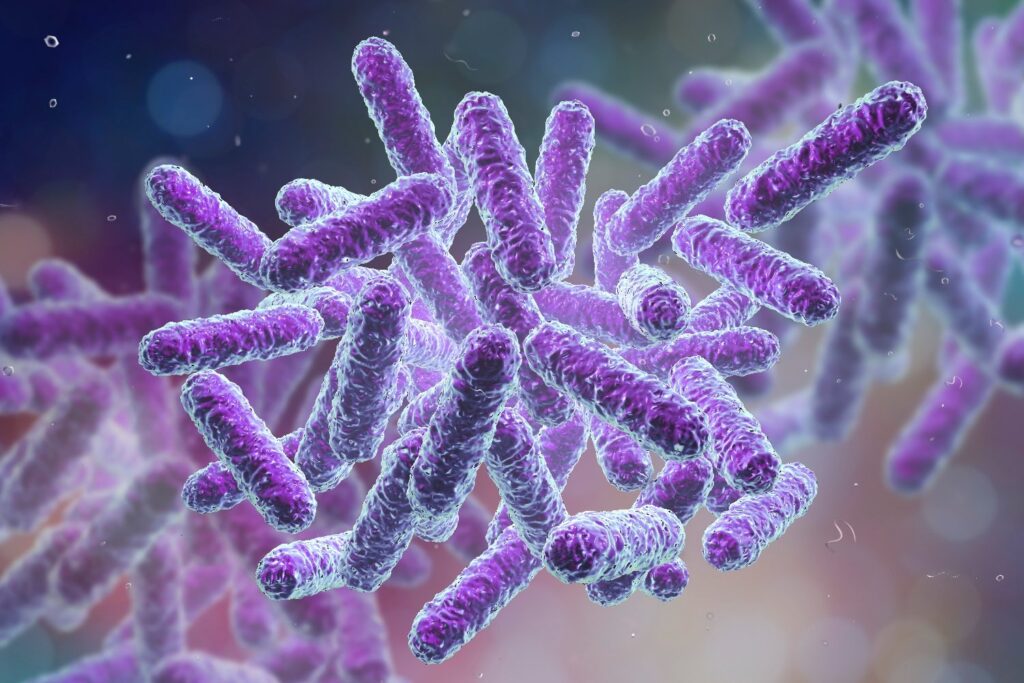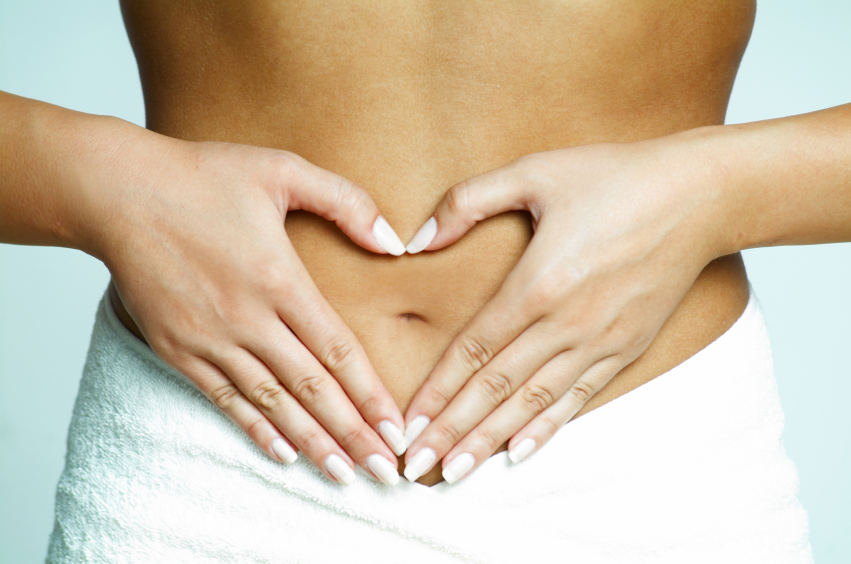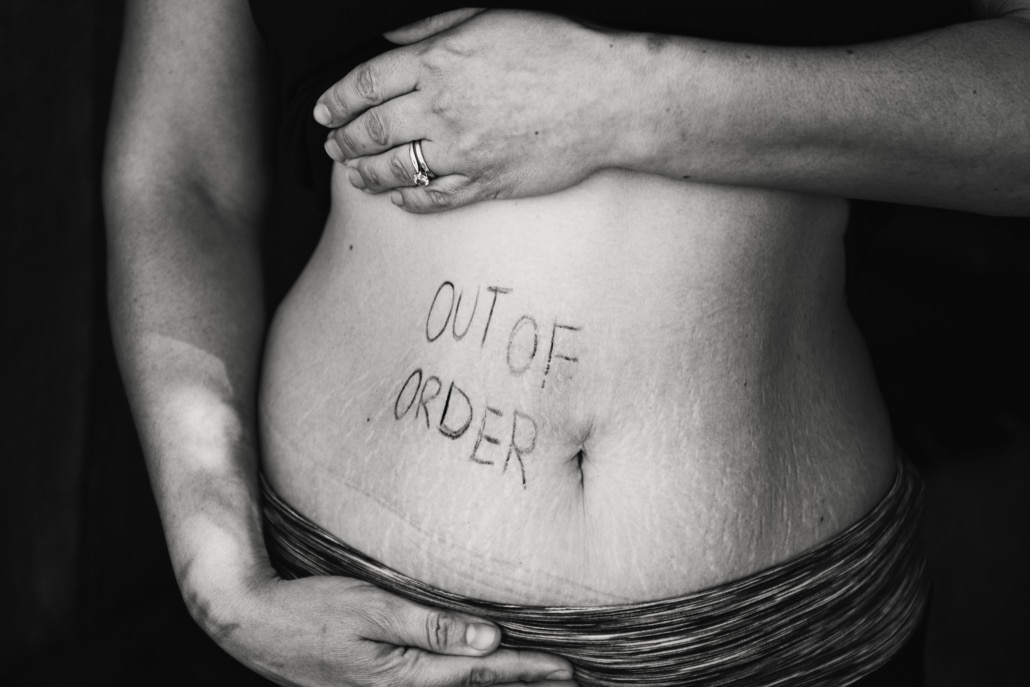Last updated on September 13th, 2022 at 12:53 pm
Is this year the year where you take the time and effort to figure out what is really causing your irritable bowel syndrome or intestinal pain? You’re certainly not alone as the International Foundation for Gastrointestinal Disorders estimates that 10 to 15 percent of the world’s population has some type of Irritable Bowel Syndrome (IBS).1 That’s close to a billion people if you’re keeping score from home.
The numbers are staggering and IBS is the fastest growing affliction next to heart disease and cancer. IBS can be very difficult to diagnose as the symptoms present like many different types of diseases. It could be anything from an autoimmune disease like ulcerative colitis or Crohns to an overgrowth of gut bacteria (Candida).
So how does your gut affect your immune system overall? The simple way to think about this is unhealthy gut microbiome composition (or “dysbiosis”) can lead to inflammation. And that means more bacterial cells pass through the damaged lining of the gut, which stimulates further immune system responses.

It’s All About The Gut
70-100 trillion bacteria line our digestive system, responsible for many physiological functions including:
- Immunity – 70% to 80% of our immune system is in our gut.2 This is important for so many reasons, particularly in fighting off infection.
- Neurotransmitter Production – every single category of neurotransmitters is found in our gut, including 80-90% of serotonin (the happy chemical). This could mean that your anxiety or depression may be linked to your digestive issues but there are other causes that need to be considered as well but start with your gut.
- Energy – microbes get energy from food as it is being digested.
- Metabolic Regulation – our microbiomes play a role in everything from appetite, fat storage, sleep cycles, hormone regulation, and even sex drive.
- Production of key vitamins and cofactors.
What’s Wrong With My Gut
The number one reason people experience gut-wrenching digestive symptoms is because of dysbiosis which is a fancy word that means a microbial imbalance that results in an impaired microbiome. The best way to think about your microbiome is it’s your personal ecosystem flowing through pipes.
The second most important thing to realize is that a microbial imbalance is usually never caused by one thing. Bacterial overgrowth is one of the most common issues but other things such as too much yeast, candida, parasites, worms, fungi or an undiagnosed auto-immune disease can also be the culprit.

To be healthy your gut is looking for the 80/20 rule. 80 percent good bacteria to twenty percent bad guys. If that ratio is tipped it becomes the perfect invitation for a whole range of unwanted pathogens to jump right in and set up. The challenge is some of the aforementioned bad guys can be really bad and you’ll be feeling really bad.
The Battlefield: What Are We Up Against?
Think of you being up against the Albert Einstein of bad guy pathogens. Like anything in life self-preservation is in just about everything and pathogens are no exception. They can be inside other cells or have biofilms around them as a community to protect themselves. These biofilms act like a goo or slime forest and actually have the ability to temporarily camouflage themselves to not look like a pathogen. Think of this like you’re on a hunting trip but your hunting chameleons that blend in with their surroundings. Makes for a tough day trying to find them.
Some of these pathogens also have the ability to mutate based on their surroundings and they can react to supplements or drugs and in some cases are not killed by them. This is the battle we’re fighting and if it were easy there wouldn’t be 10 to 15 percent of the world struggling with it.
Conquering: Let’s Do This (4 Steps To Healing Leaky Gut)
Step 1: Remove & Recondition
It may seem simple but we need to remove all the irritants that are creating the issues (dysbiosis) in the first place. So where do we start? With our diets of course
You need to temporarily remove dairy, sugar, soy, caffeine, and alcohol (that includes you red wine drinkers out there). You also need to consider greatly reducing or eliminating wheat and gluten. By removing these things you stop feeding the army of bad guys you’re trying to defeat.
Now for the removal of the bad stuff with natural anti-biotics and natural antifungals. Herbal blends are great for this including ones with Wild Oil of Oregano and also supplements with Immunoglobulins. Think of Immunoglobulins as natural antibiotics and toxin binders that grab toxins and escort them out of the body. MegaIgG2000 is my top pick for an immunoglobulin supplement and binding agent to bind to the toxins and carry them out.
You’re going to be killing things off and dead things don’t always smell great. You may experience what’s known as “die-off” and not feel so great. The good news is this is temporary and completely necessary and you know it’s working. There are tons of variables in the process and it works differently for each person based on:
- How severe are your issues
- How effectively are organs like your liver functioning
- How well is your methylation cycle functioning
In summary, many practitioners miss the binder and detox responses can be greatly diminished when incorporating the binder. I’d suggest starting with the immunoglobulin toxin binder in this step along with the diet change but please be warned that if you don’t make the diet change or you aren’t consistent you’re wasting your time and money. They say, happy wife, happy life but there isn’t a nice rhyme for your gut health just remember healthy gut, happy you!
Step 1 Protocol Summary:
Toxin Binder: Start taking MegaIgG2000 as a toxin binder
Week 1: One Capsule w/ morning meal and one capsule with evening meal
Week 2 On: Two Capsules w/morning and evening meals
Probiotics: Begin taking MegaSporeBiotic following the dosing schedule
Week 2: Take ½ capsule every other day
Week 3: Take ½ capsule daily
Week 4: Take one capsule daily
Step 2: Replace The Bad With The Good
As you remove the culprits that have been leading to poor digestion and poor gut health it’s a natural process to replace the bad with the good. The first thing is to incorporate healthy foods that help and support the removal process. You know what healthy foods are and aren’t so choose wisely and put down the red wine and ice cream for now. You have no idea how much it pains me to say that.

If you have gut issues it’s more than likely that you are dealing with some type of nutritional deficiency. This occurs for a few reasons but can be summarized by our packaged food diets don’t carry an abundant nutrient supply and our intestines may have experienced some damage where they are not absorbing nutrients as efficiently as they should be.
When we’re talking about nutrients please don’t be confused. We’re getting plenty of “Macronutrients” such as proteins, fats, and carbohydrates, but it’s the “Micronutrients” such as vitamins and minerals that can be lacking.
Healing can’t take place in the absence of micronutrients as they do amazing things such as regulating hormones, producing enzymes, replenishing cells, etc…. Medical Foods relating to gut health were created for just such a thing. Many of these medical foods contain a complete micronutrient profile. They also contain Sustamine which is an advanced form of L-Glutamine that is highly absorbable and in studies it shows a 224% increase in absorption compared to standard L-Glutamine. L-Glutamine is a fuel source for your mucosal cells and this critical amino acid works hard to improve those intestinal mucosal cells so they can work properly. Ultra GI Replenish and Dynamic GI Restore are the top two medical foods that we see patients have great success with the replace phase.
Bring In The Good Guys
This is also the time to ramp up by putting in good gut bacteria also known as probiotics but not just any probiotic. MegaSporeBiotic is our top spore-based probiotic supplement and we’ll talk more about spores below. MegaSporeBiotic is a very potent probiotic and we recommend starting very slowly with ½ or even ¼ capsule and slowly increasing to the target dose of 2 capsules per day for anyone over the age of 3 years old and 1 capsule per day for infants and toddlers. If the child appears to be sick or getting sick, you can increase to 2 capsules per day. The target dose of MegaSpore is not determined by weight or age but by the development of the gut microbiome, which is fully formed around 2.5 years of age.3
Once upon a time, as humans we had our hands in the dirt instead of on keyboards
We were outside in nature, playing with Tonka toys as kids or with balls in the backyard. We grew food with our own two hands. We picked up these organisms through the dirt and they kept our microbiome flourishing and our immune systems strong. Soil / spore-based probiotics are what we highly recommend. These organisms (also known as spores) do not require refrigeration and completely survive the acidity of the stomach. They literally come from soil/dirt and they are very effective.
Why A Spore Based Probiotic Versus A Soil or Lactic Acid Based Probiotic?

There are three classes of probiotics. Lactic Acid Based, Soil Based, and Spore Based. It’s important to understand that spore-forming probiotics can be a type of soil-based probiotic, meaning that some spore-forming bacteria are from the soil. This is why only some soil-based bacteria have the ability to colonize the gut, whereas all spore-forming probiotics have it. There is no crossover with lactic acid probiotics. Like soil-based probiotics, spore probiotics are highly resistant to harsh conditions, which means they can survive and grow in any environment. They can even resist antibiotics, whereas other types will likely be killed by antibiotics. This means they are much more likely to stay and colonize the gut, living there and helping to sweep out bad bacteria. They can also remain dormant in the gut for a long time, and then revive themselves when nutrients are present so we do recommend that you take MegaSporeBioitic with food.
Once you begin the process of removing the unwanted pathogens your body slowly begins to win the war. As the mucosal lining begins to heal, we absorb significantly more nutrients than we once did, and energy returns. Gut-wrenching symptoms begin to vanish.
Throughout this phase, you can continue taking the immunoglobulin binder such as MegaIgG2000. This is a great phase as things should start to fall in place as all bodies want to heal so say goodbye to leaky gut.
Step 2 Protocol Summary:
- Toxin Binder: Continue taking MegaIgG2000 as a toxin binder until done with bottle. Continue if it is helping with detox symptoms.
- Probiotics: Continue taking MegaSporeBiotic following the dosing schedule
Week 5+: Take 2 capsules daily (I suggest taking one in the morning and one at bedtime) - Nutrients: Make sure you’re getting the right micronutrients and if not consider a medical food to obtain the optimal micronutrient profile
Step 3: Rebuild & Reinforce

Let’s review. With a compromised digestive system with gut-wrenching symptoms, there is lots of rebuilding to be done and anytime you rebuild you want to reinforce it so it stays that way. The mucosal lining had lost its integrity and inflammation had caused what is called the tight junctions of the intestinal lining to loosen. When these tight junctions are loose undigested food particles and or pathogens can seep through the lining and end up in the bloodstream which causes an inflammatory response and you to not feel very good.
The immune system picks up on these particles as invaders, hence triggering more of an auto-immune response. We need to finish the repair and reinforce the mucosal cells which will restore the tight junctions and we can kiss leaky gut goodbye.
Now that we have good gut bacteria being seeded into our intestines we need to feed that good gut bacteria with gut bacteria food otherwise known as prebiotics.
Feed Me
To feed the good gut bacteria we want to be feeding keystone bacteria like Akkermansia muciniphila, Faecalibacterium prausnitzii, and Bifidobacteria. Prebiotics are non-digestible fibers that feed the bacteria living in your gut, however, most prebiotics on the market can feed both harmful and beneficial gut bacteria, which can exacerbate digestive issues. Keystone bacteria like bacterium prausnitzii, and Bifidobacteria are very important for human health, but their populations can be easily diminished by antibiotics, stress, diet, glyphosate, and other environmental toxins.
We recommend using MegaPrebiotic from Microbiome Labs to feed the good gut bacteria as its composed of clincally-tested, non-digestible oligosaccharides that can increase microbial diversity and selectively feed beneficial, keystone bacteria like Akkermansia muciniphila, Faecalibacterium prausnitzii, and Bifidobacteria. Those are the good bacteria we want to feed and keep healthy.
Bind Those Toxins Part Deaux
To continue to reinforce the mucosal barrier we want to continue to neutralize toxins and a great way to do that is by utilizing immunoglobulins. We started out the protocol with a heavy dose of immunoglobulins and we’re going to finish with more immunoglobulins but we’re also going to add some key amino acids as well as a patented natural citrus fruit extract rich in polyphenols and polyphenols help increase short-chain fatty acid’s which are key to mucosal lining health.
The dairy-free immunoglobulin concentrate we talked about above supports healthy digestion, neutralizes environmental toxins, and helps to REBUILD protective intestinal barriers. These IgG antibodies can reduce the damage of metabolic endotoxemia and neutralize LPS, an endotoxin that triggers mucosal activation.
There are four key amino acids that play an important role in the production of intestinal mucosa include: L-proline, L-serine, L-cysteine, and L-threonine. These four amino acids have been shown to increase mucin2 production and stimulate mucin synthesis in the colon, resulting in a thicker and healthier mucosal barrier.
MicrobiomeX® is a natural citrus extract rich in polyphenols that support digestive health and immunity by increasing microbial diversity in the gut and maintaining healthy gut barrier function. A clinical study using 500mg of citrus fruit extract found a significant increase in short-chain fatty acid (SCFA) composition, suggesting that these polyphenols may help modulate the microbial composition in the gut.
All of these things are a part of the MegaMucosa supplement by Microbiome labs and we’ll be adding that to the protocol in this phase.
The last thing and a very interesting tie is that I have found collagen to be an excellent thing to support a damaged intestinal lining. It contains high amounts of proline and glycine, key amino acids specific to repairing the GI cells, and also boosts gastric juices.
It will tone and tighten and not just your gut. When I began ingesting 2-3 tablespoons of high-quality collagen a day I found noticeably beneficial changes in my skin.
Collagen is the most organic way to repair the mucosal lining, without risk.
Step 3 Protocol Summary:
Probiotics: Continue taking MegaSporeBiotic
Prebiotics: Begin taking MegaPrebiotic.
Week 6+: Mega Prebiotic
Powder: Start with 1/2 scoop daily mixed in water or smoothie
Capsules: 1 capsule at each meal (3 capsules per day)
Week 7+:
Powder: 1 scoop daily with or without food
Capsules: 2 capsules at each meal (6 capsules per day)
MegaMucosa:
Week 8-12:Take 1 scoop daily with or without food, or as directed by your healthcare practitioner. Mix into 16 oz of cold water or liquid of your choice.
Collagen: There are multiple collagen options but my top three are as follows:
At the end of week 12 see how you feel and if you want to go on maintenance dosing you can reduce MegaSporeBiotic to one capsule 4 days a week. Mega Prebiotic can be used to help boost immunity or be sipped throughout the day on a regular basis.
REFERENCES
- Statistics (aboutibs.org)
- Nutrient tasting and signaling mechanisms in the gut. II. The intestine as a sensory organ: neural, endocrine, and immune responses – PubMed (nih.gov)
- Rodriguez JM, Murphy K, Stanton C, et al. The composition of the gut microbiota throughout life, with an emphasis on early life. Microb Ecol Health Dis. 2015;26:26050
NOTHING IN THIS WEBSITE IS INTENDED AS, OR SHOULD BE CONSTRUED AS, MEDICAL ADVICE. ANY HEALTHCARE AND/OR NUTRITIONAL MATERIAL CONTAINED IN THIS WEBSITE IS FOR CONSUMER INFORMATIONAL AND EDUCATIONAL PURPOSES ONLY. SUCH MATERIAL IS NOT INTENDED AS MEDICAL ADVICE FOR CONDITIONS OR TREATMENT, NOR IS IT INTENDED AS A SUBSTITUTE FOR A MEDICAL EXAMINATION BY A HEALTHCARE PROFESSIONAL. CONSUMERS SHOULD CONSULT THEIR OWN HEALTH CARE PROFESSIONALS FOR INDIVIDUAL MEDICAL RECOMMENDATIONS.
- Magnesium Threonate: An Honest Buying Guide for Health Enthusiasts - March 21, 2024
- Magnesium Citrate Vs Glycinate: 5 Key Differences And Benefits - March 14, 2024
- How to Pick the Best Magnesium Glycinate Supplement for You - March 7, 2024




